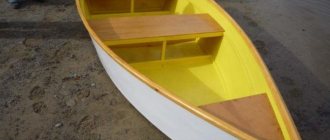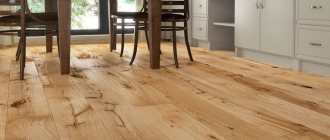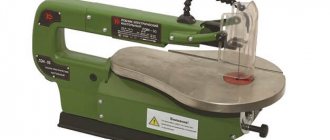Advantages and disadvantages
Spoons made of wood are harmoniously combined with glassware and various porcelain items. They fill the warm atmosphere of the home with national identity. An increase in demand for such products is observed in connection with the general trend towards a healthy lifestyle. Interest in cutlery made from natural materials is based on the valuable natural qualities of wood:
- antibacterial properties - proper treatment of spoons prevents the proliferation of pathogenic organisms;
- the special aroma of wood - a subtle aroma accompanies any dish and creates a unique flavor;
- environmental safety - the natural purity of the material without toxic substances or harmful impurities serves to improve the health of the body and has a beneficial effect on the youngest children;
- strength - the absence of cracks, chips, scratches on the spoons ensures a long service life;
- pleasant surface - a feeling of warmth creates comfort in using the spoon;
- light weight - a wooden spoon can be easily held by children and weakened people.
An important feature of the spoon is that the device does not slip out of wet hands. They are convenient for mixing the ingredients of various dishes, salads and even dough. An additional benefit is that the non-stick coating of a modern pot or pan cannot be damaged by a wooden spoon.
The undoubted advantage of the material is its low thermal conductivity - the product, unlike metal analogues, does not burn after touching the lips. With such devices you can safely stir hot or cooking dishes.
If we talk about shortcomings, there are several of them. High-quality wooden spoons are more expensive than utensils made from other materials. In addition, they require care and special storage conditions. There are several basic rules that you can follow to maintain the strength of your devices:
- do not use abrasives or aggressive cleaning liquids;
- Do not wash the wooden spoon in the dishwasher, only by hand;
- do not keep it in water for a long time.
After each use, spoons should be dried thoroughly. The porous structure of wood does not tolerate dampness or pungent odors. Violation of the rules of care leads to the appearance of bacteria in small cracks and loss of appearance. A spoiled product is harmful to health, so a spoon with traces of mold should be thrown away without delay.
Wooden spoons are quite durable and environmentally friendly
Wooden spatulas and spoons cannot damage the non-stick coating of cookware
Wood species used for manufacturing
Since ancient times, different types of wood have been used to create cutlery:
- linden;
- oak;
- nut;
- maple;
- juniper;
- birch;
- cherry;
- bamboo.
All species for making wooden spoons have excellent characteristics. Natural material lends itself well to technical processing, after which no “lint” or roughness remains. Before purchasing, the consumer is advised to inquire about what kind of wood the dishes are made of in order to take into account the safety margin and level of moisture resistance of the cutlery.
A special feature of products made from cherry and maple is their durability. Spoons made from linden are considered softer, but are quite common. Products made from juniper have antibacterial properties. Short-lived devices include:
- oak - cracks appear from mechanical stress;
- ash - small fibers are formed during operation.
Softwoods release resin when heated, so there will be a bitter taste when using spoons. The increased porosity of this material contributes to their instant moisture and absorption of foreign odors, as a result of which their service life expires faster than that of other wooden analogues. After some time they simply crack.
Subject and ornament
Khokhloma
Khokhloma spoon
In ancient times, in the forests of the Trans-Volga region, not far from the village of Khokhloma, Novgorod province, the first settlers were fugitives who took refuge here from the persecution of landowner oppression for the “old faith”. Some of them were icon painters and masters of hand-painted miniatures. Infertile lands made it impossible for the peasants to feed themselves, and the refugees began to use their skills by painting wooden dishes made by local craftsmen. This painting, unknown to the village, wonderfully decorated modest wooden kitchen utensils. The colors sparkled with golden and red sun rays. The fame of such festive dishes spread not only throughout the entire district, but also became famous throughout Rus'.
Each artisan had his own specificity, but the products were made by hand. After all, making wooden spoons is not an easy process. First you need to cut out a wooden blank for the future spoon, then dry it, cover it with a thin layer of clay and soak it in flax oil. The highlight of this painting is that not gold, but silver powder is applied to the tree, on top of which the design is made. Then the products are varnished and hardened in an oven at high temperature. As a result, a honey-golden color appears, characteristic only of Khokhloma.
To paint products, they use either a black and red pattern on a gold background or a gold ornament on a red, green, or black background. In Khokhloma paintings, artists depict plant forms in the form of bright red rowan berries, strawberries, and flowers; fish, birds and animals are also found. Craftsmen decorate the surface of spoons with flexible, wavy stems with leaves, berries and flowers, giving them a unique elegant look.
Varieties in shape and size
The shape and dimensions of the device depend on the purpose of the spoon. It is customary to distinguish the following types:
- round spoons - intended for eating, mixing ingredients;
- round with an elongated handle - used in cooking and serving;
- spoons with a narrow cut - for removing onions, other vegetables or bay leaves from liquid;
- flat - convenient for scraping food debris from the bottom of a pot, frying pan, for grinding, stirring thick masses;
- skimmers - distinguished by the presence of holes and large size; are intended for mixing sauces, skimming foam, and decanting water while removing dumplings, cabbage rolls, and meatballs.
There is also a special wooden spoon for honey, spices, and mustard. Small hooks on the handles provide the possibility of vertical storage of products. A separate category consists of souvenir products for kitchen decoration and room decor.
Spoon sizes vary depending on capacity, handle length and thickness, and blade width. For example, the standard volume of a large model for removing porridge from a deep cup is 18 ml.
Round
Spatula
With long handle
With slits
Skimmers
Making wooden spoons with your own hands
In this article you will learn about making wooden spoons. I'll show you how to make a wooden spoon from apple wood using only handmade tools.
Process of making wooden spoons
Step 2: Tools I Used
These are the tools I needed to make this cutlery.
You will need:
• Axe: Any small ax will do. It should be sharp. A suitable ax weighs 500-600 g.
• Hammer: You need a heavy hammer. If it is small, you will not be able to split wood.
• Chisel: A heavy metal wedge used to split logs. Alternatively, you can use an old ax and hammer. But don't use a good axe, you'll ruin it.
• Knife: a small, sharp knife.
• Carving knife: You can buy it online and in stores.
Step 3. Wood
You will need a log. It should be 10-15 cm longer than the future product. It must have been recently cut. It should be left in the grass for a while, it will become damp and you can work with it for 2-4 weeks.
You can use any wood for this, but fruit tree wood is best. For my product I used apple wood. It works well for the job, is hard and durable, and looks beautiful.
This log can produce 4-8 spoons, depending on their size.
Step 4: Chop the log
Now you will need a hammer and chisel to split the log into 4 triangular pieces.
Start splitting in the middle. If there is a crack in the log, use it to split it.
Step 5. Cut out the shape
Using a piece of charcoal I drew the outline of the cutlery. I cut it out as close to the drawing as possible. When working with fresh wood, you need to do everything quickly so that the wood does not dry out and crack. If you need to postpone work, place the workpiece in a bucket of water or refrigerator.
This is the front part of the log. I just removed the bark and drew the center line.
This is the side of the log. Here I have drawn the outlines.
I used an ax to remove the excess wood from the front.
You can see the spoon shape here.
Now I cut the wood from the back side.
I first removed the excess wood from the top of the piece, then from the handle.
Once the wood was the right thickness, I drew the outline of the cutlery.
stay close to the line.
Now we have the outline of a spoon on all sides.
Now let's cut out its back side. Try to do this as accurately as possible on both sides. Pay special attention to the thin part, if you make the spoon too thin it may break. Pay attention to the handle: it has a triangular shape. This makes it stronger.
Step 6. Finish processing with a knife
Using a knife, I completed the shaping of the piece. I processed the recess with a carving knife to finally level the surface. I made the last spoon with a thread on the end of the handle.
Try to make it smoother.
This will make the sanding process easier for you. I stick to a triangular shape at the end of the handle.
The resulting device should not be very thin, or it will eventually break. But the thinner the spoon, the more elegant it looks. I made the thickness 2-3 mm.
I made a triangular shape here. It looks nice and makes the product stronger.
In this blank, I left the end of the handle thickened in order to make a figured carving.
The curl looks nice and prevents cutlery from falling into the pan.
Step 7: Sanding
The product must be dry before sanding. This takes from 3 to 5 days, depending on the weather.
I started sanding with 100 grit sandpaper, then 180, 240 and 400. If I were doing it like a real Viking, I would use a special grade of horsetail.
Sand outside or wear a respirator
Step 8. Oil or wax treatment
I took linseed oil. Apply a thick layer of oil, leave for several hours, then remove excess oil with a paper towel. Let dry and then wax. I only used wax when I was making items to sell. Wax protects against dirt.
Step 9. Finish
The spoon is finished and ready for the kitchen. After the spoon has been washed several times, the integrity of the wood fibers may be compromised, then it is recommended to polish it again with fine sandpaper.
Step 10. Other crafts: sizes and designs
Subtleties of use and storage
It is possible to preserve the original appearance of a wooden product if the requirements for the use of cutlery are met. After purchase, it is recommended to treat the surface of the spoon with linseed oil. The protective layer will prevent the wood from getting deeply wet and drying out. The procedure must be repeated approximately once a month.
It is recommended to store devices separately from metal analogues and other utensils. The ideal place to place clean spoons should be protected from sunlight and moisture. Experts in the use of wooden utensils pay attention to the following points:
- Do not place items in a boiling liquid, leave them in a hot dish for a long time, or put them in the refrigerator along with leftover food - temperature changes spoil the appearance and lead to deformation of items;
- Spoons should be washed after each use with a damp sponge without an abrasive surface;
- It is forbidden to dry products near heating devices or fans - this leads to loss of natural moisture of the material and destruction of objects;
- After washing, it is useful to wipe clean spoons with a dry soft cloth.
If an unpleasant odor appears, preventive treatment of products with hydrogen peroxide or diluted alcohol is recommended.
It is necessary to wash wood products immediately after use, before food residues have dried on them.
With proper care and storage, wooden spoons will last a long time.
How to make it yourself
Good quality carved spoons amaze with their elegance. This is due to the skillful work of the craftsmen. But every amateur can try himself in this craft, since making a wooden spoon with your own hands is not difficult. It is better for inexperienced craftsmen to do the work from a block of linden or alder or birch. Softwood of these species is easy to cut and sand.
The set of necessary devices includes:
- axe, handsaw, file;
- straight and round chisel;
- knife, rasp;
- sandpaper (coarse and fine);
- pencil.
First, rough work is done using an ax or saw. In subsequent stages, the tools are alternated to achieve the desired shape and quality.
Initially, a rectangular blank is made from strong wood, approximately 25 cm long, 2.5 cm high, 5 cm wide. It is recommended to start cutting with a piece without traces of rot or cracks. The image of a spoon on paper is copied onto the surface of the bar from both sides - from the side and from the top. Next, using a chisel, remove excess areas along the contour and form the product. It is recommended to leave allowances for the thickness of the device for subsequent grinding.
Inexperienced craftsmen prefer to use linden, as it is easy to cut.
Wood carving requires precision and patience. A jigsaw, knife, and file are used at different stages of turning. DIY wooden spoons are created by scraping wood. It is important to control the thickness of the product when forming the round shape of the device and the recess of the scoop, so as not to make it very thin and fragile.
Finishing trimming and wood processing is carried out in stages, with a gradual decrease in the grain size of the sandpaper during the grinding process. You can get rid of lint after wetting the spoon after repeating the cleaning of the dried product three times. At the end of the work, the surface is lubricated with heated linseed oil, which has antibacterial properties. To extend the service life, this surface treatment will have to be repeated periodically.
Craftsmen can make a product on a lathe if they have spoon knives, bristled brushes, and cutters. The main stages of work are the same, but the quality of the resulting product will be much higher.
A special feature of homemade products is their unique appearance. Decorative models are coated with special compounds and protective varnish to preserve the structure and color of the wood. Experienced craftsmen paint the devices and decorate the handles with figured carvings. Designer spoons make you happy with their elegant appearance, but are not suitable for culinary processes or use as cutlery.
Russian wooden utensils: spoons, ladles, Khokhloma painting
About the places of production and sales markets for wooden turned utensils in the 16th - early 17th centuries. Receipt and expenditure books, acts and inventories of monastery property provide a wealth of material. It is clear from them that the production of wooden turning utensils was carried out by the quitrent peasants of the Volokolamsk, Trinity-Sergius, Kirilo-Belozersky monasteries, artisans of the Kaluga and Tver provinces, and townspeople of Nizhny Novgorod and Arzamas.
By the end of the 18th century. the production of wooden turning utensils became widespread. Russian artisans created truly perfect forms: stavtsy, stavchik, bratina, dishes, bowls, goblets, cups, glasses. The skill, passed down from generation to generation, was improved by the creativity of each generation.
1 - brother; 2 - bowl; 3, 4 - dishes; 5, 6 — cups; 7 - glass; 8 - glass; 9 - bettor; 10 - bettor.
The most common of individual utensils was a stavetz - a deep bowl-like vessel with a flat tray and a voluminous lid. Some of them had figured handles. The staves were of different sizes: stavs, stavtsy and stavchik. Stavtsy and stavchik were used as dinnerware. Large stavs served as storage for smaller dishes and bread products.
The festive table was decorated with brothers, dishes, plates, cups, glasses, feet. Bratina, a medium-sized spherical vessel with a small neck on top and a slightly bent outward rim, was always made on a pallet. Bratina served to serve drinks to the table. Pies, meat, fish, and sweets were served on dishes and plates with wide edges, flat sides and round trays or reliefs.
The most common type of utensil among peasants was the bowl - a hemispherical vessel with a straight rim, a flat low tray or a small round relief. An indispensable accessory for every table was a salt shaker. Turned salt shakers are small, capacious vessels with a low, stable base, with or without a lid.
Stozharov Vladimir Still life with rowan
Khokhloma dishes
Very popular since the 19th century. Khokhloma dishes began to be used, which were produced in large quantities in the Semenovsky district of the Nizhny Novgorod province. It could be found not only in Russia, but also in the countries of the East.
Industrial exhibitions contributed to the popularity of Khokhloma dishes: in 1853 it was first demonstrated at a domestic exhibition, and in 1857 at a foreign one.
Over the centuries, certain types of wooden utensils have been developed and improved in this craft, distinguished by their noble simplicity of silhouette, strict proportions, and the absence of pretentious details that crush the shape. Modern craftsmen, using the best traditions of the past, continue to make wooden utensils, which are both household items and a magnificent home decoration.
Russian wooden spoons.
An ancient spoon, apparently having a ritual purpose, was found in the Gorbunovsky peat bog in the Urals. It has an elongated, egg-shaped scoop and a curved handle ending in a bird's head, which gives it the image of a swimming bird.
In Novgorod the Great there were many types of wooden spoons. For example, spoons with a small flat handle, as if raised on a comb. Novgorod craftsmen decorated them with carvings and paintings. The ornament - a braided pattern, made using the technique of contour carving, was applied in belts to the handle and framed the blade. In the Russian North in the 17th century. Vologda-made onion spoons, made in the Vologda region, were known, as well as shadar spoons with bones, indigenous spoons with bones or spoons inlaid with bone, walrus tusk.
1, 2 - simple spoons. XIII centuries; 3, 4, 5 - traveling spoons, X, XI, XVI centuries.
Each nationality of our country has its own forms of spoons, but the most famous are the spoons made in the Volga-Vyatka region. There are over forty varieties of them, only in the Gorky region they made and make ladles, rubbed spoon, salad spoon, fisherman spoon, thin spoon, mezeumok spoon, half-bass spoon, Siberian spoon, baby spoon, mustard spoon, jam spoon, etc.
The production of spoons was already a well-established, ramified production in the past. In some villages they made preparations, the so-called fragments or baklushi. In a small stump with slightly hewn edges, widening in the part that should become a scoop, it was difficult to discern a spoon. In other villages, spoon workers roughed out a hole with an adze, which was then cleaned out using a hook cutter. With a confident movement of the knife, they cut off the excess from the handle, giving it a slight bend, and the spoon was ready.
Russian wooden ladles
Today, several types of traditional Russian ladles are known: Moscow, Kozmodemyansk, Tver, Yaroslavl-Kostroma, Vologda, Severodvinsk, etc.
Moscow ladles, made from burl with a beautiful texture pattern, are characterized by bowls of a clear, even refined boat-shaped shape with a flat bottom, a pointed spout and a short horizontal handle. Burl dishes were often made in a silver frame.
Kozmodemyansk ladles were made from linden. Their shape is boat-shaped and very close to the shape of Moscow ladles, but they are much deeper and larger in volume. Some of them reached a capacity of two or three, and sometimes four buckets. The handle is flat and horizontal with a structural addition of a purely local nature - a slotted loop at the bottom. Kozmodemyansk is also characterized by small scoop ladles, which were used for scooping drinks from large bucket ladles. They are predominantly boat-shaped, with a rounded, slightly flattened bottom. The almost vertically placed handle, running from the bottom, multi-tiered in the form of an architectural structure, is decorated with through carvings, ending with the image of a horse, or less often a bird.
Stozharov Vladimir Still Life Linen
Tver ladles are hollowed out from the root of a tree. Mainly retaining the shape of a rook, they are more elongated in width than in length, which is why they appear flattened. The bow of the bucket, as usual with navicular vessels, is raised upward and ends with two or three horse heads, for which Tver buckets received the name “grooms”. The handle of the ladle is straight, faceted, the upper edge is usually decorated with ornamental carvings.
The ladles of the Yaroslavl-Kostroma group have a deep rounded, sometimes flattened boat-shaped bowl, the edges of which are slightly bent inward. In earlier ladles the bowl is raised on a low tray. Their handles are carved in the form of a figured loop, the nose is in the form of a cock's head with a sharp beak and beard.
Vologda ladles are designed for scooping drinks from large ladles. They are characterized by a boat-shaped shape and a round spherical bottom; they were hung on a large ladle. The hook-shaped handles were decorated with an incised design in the form of ducks.
1 — burl boat-shaped Moscow bucket; 2 - large Kozmodemyansky ladle; 3 — Kozmodemyansk scoop ladles; 4 — Tver ladle “groom”; 5 — ladle of the Yaroslavl-Kostroma type; 6 - Vologda dump bucket; 7 - Severodvinsk skopkar; 8 - Tver valley; 9 - Severodvinsk valley.
In the Russian North, skopkari ladles were carved from tree roots. Skopkar is a boat-shaped vessel, similar to a ladle, but with two handles, one of which is necessarily in the form of the head of a bird or a horse.
Severodvinsk skopkari were also cut from the root. They have a clear boat-shaped shape, handles processed in the shape of the head and tail of a waterfowl, and in their entire appearance they resemble a waterfowl.
Stozharov Vladimir Still life
Along with ladles and skopkars, endovs or “yandovs” were also decorations of the festive table. Endova - a low bowl with a sock for draining. Large valleys could hold up to a bucket of liquid. Their Tver and Severodvinsk variants are known. The best Tver valleys are carved from burl. They are a bowl on an oval or cubic shaped tray with a toe-drain in the form of a trench and a handle. The endova of the Severodvinsk type has the shape of a round bowl on a low base, with slightly bent edges, with a semi-open toe in the form of a groove, sometimes figuratively carved.
Stozharov Vladimir. Still life. Bratina and garlic
The initial processing was carried out with an axe, the depth of the vessel was gouged out with an adze, then leveled with a scraper. The final external processing was carried out with a chisel and knife.











